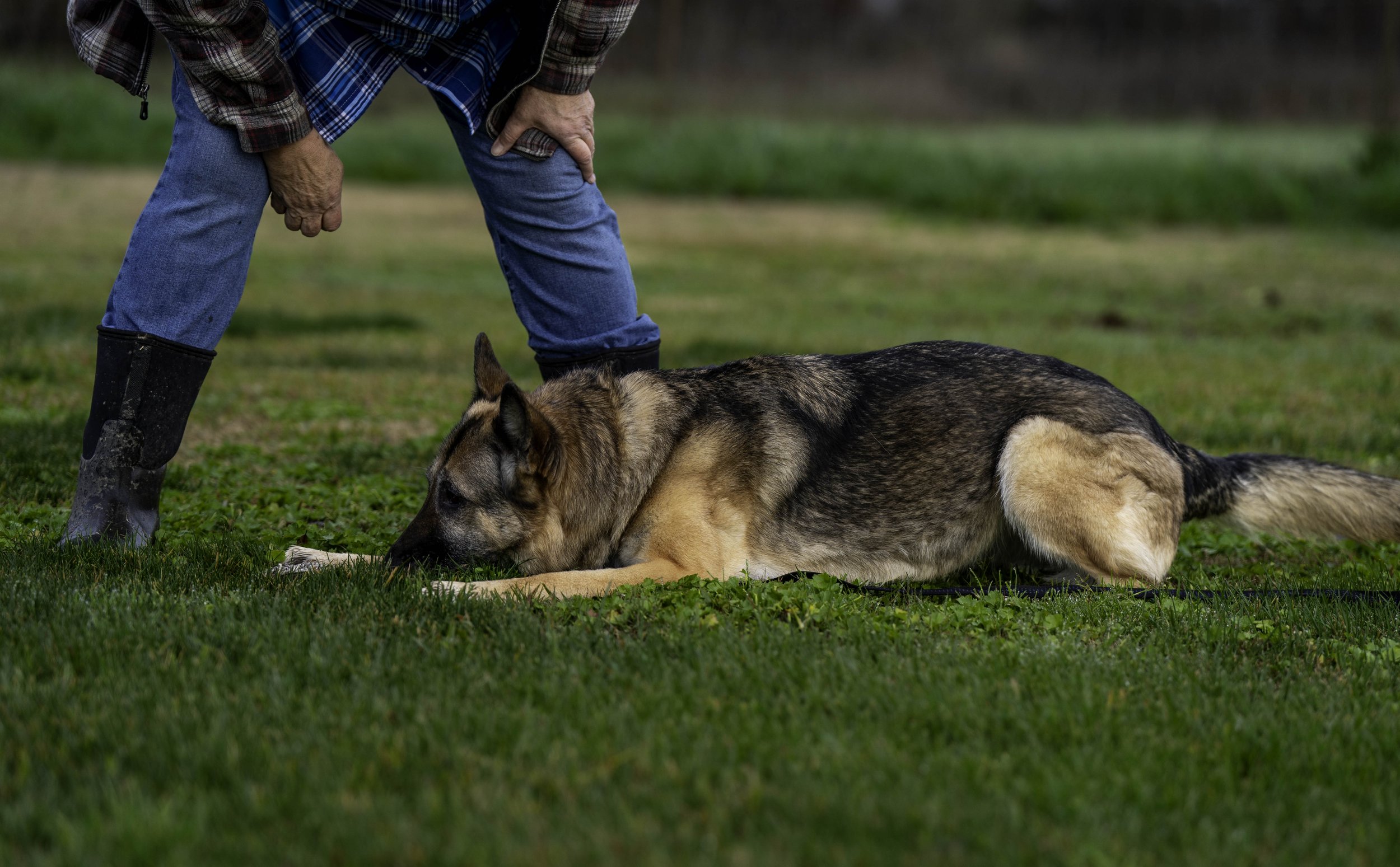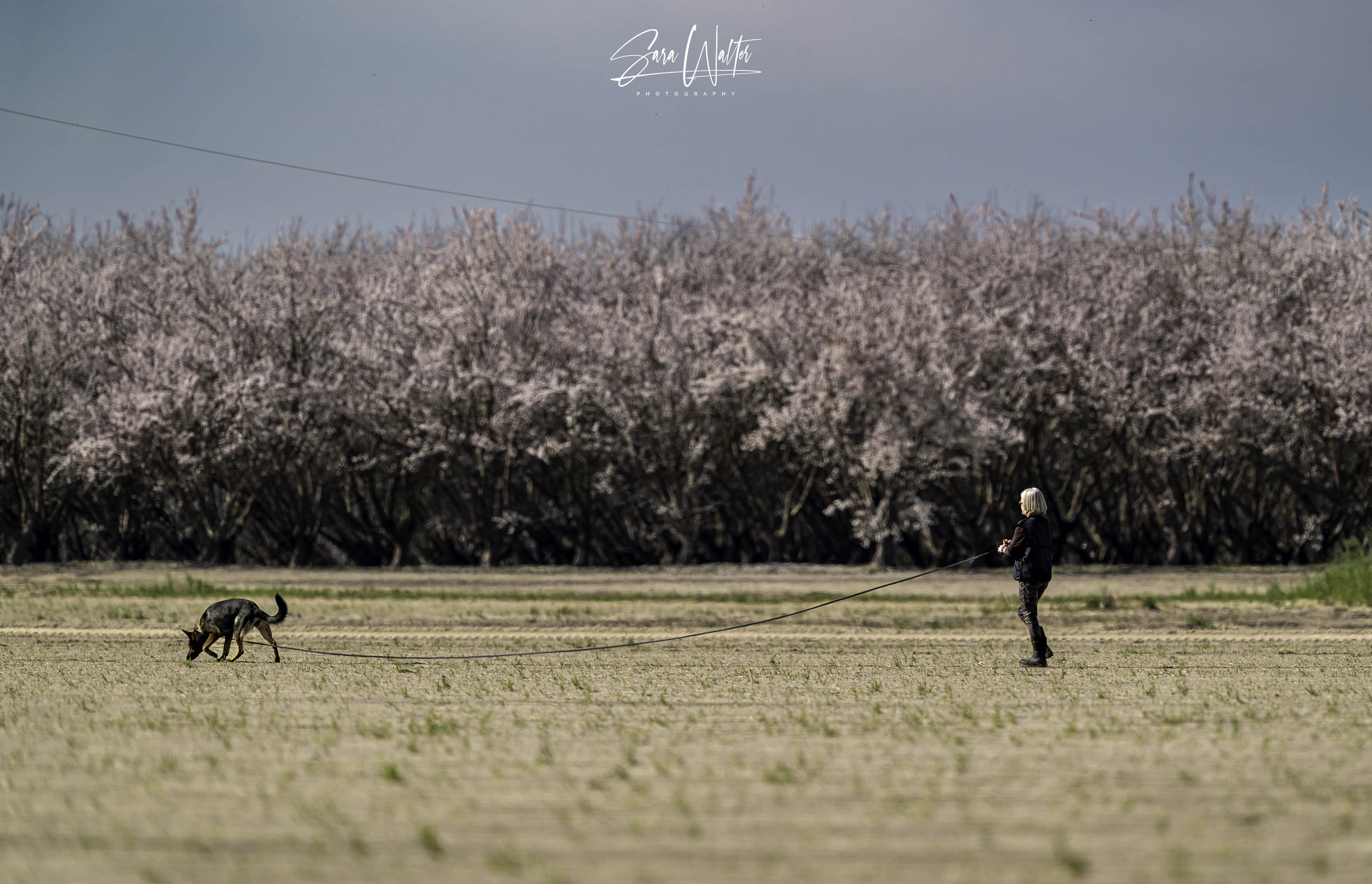What is IPO/Schutzhund?
IGP (Internationale Gebrauchshund Pruefung) or IPO (International Prufungsordnung)--formerly known as "Schutzhund"--is a working dog examination designed to test the intelligence, utility, and versatility of working breeds. This sport measures the dog's mental stability, temperament, endurance, structural efficiency, natural scenting ability, courage, and desire to work with man. IPO sport focuses on developing and evaluating those traits in dogs that make them more useful and happier companions to their owners. IPO also serves as a breeding suitability test for working dogs, by ensuring that the dogs used for breeding actually possess the genetic working traits valued in these breeds.
IPO consists of three equally-weighted phases: tracking, obedience, and protection. The dog and handler must pass each phase at a given trial in order to earn an IPO working title. In order to compete for any IPO title, the dog and handler must first pass a basic temperament and obedience test known as the BH; the dog must be a minimum of 15 months old to attempt the BH. After this, the dog and handler can attempt their IPO 1 once the dog reaches 18 months of age. There are three levels of IPO titles, ranging from the entry level IPO 1 to the intermediate IPO 2 and onward to the higher level IPO 3. If any phase of the IPO test is failed, the dog and handler must still attempt all three phases the next time they enter a trial. They cannot pass one phase here, then next phase there, and then the last phase at a different trial. Essentially, it is an “all or nothing” event.
Tracking
In the tracking phase (A phase), the dog and handler work together to follow a “track” left by a person (the tracklayer). This type of tracking is very specific, requiring the dog to methodically work through the track with intense focus and minimal guidance from the handler. The handler follows the dog at a distance of 10 meters (approximately 33 feet) at the end of a 10-meter line. Each track at each level includes turns and articles, which are objects left on the track by the tracklayer. The dog must point out or pick up the articles as he reaches them, and must wait for the handler to collect the article and restart him. To earn top points, the dog must demonstrate a deep nose (nose close to the ground at all times), good focus and intensity, and accurate working out of the track—checking nearly every footstep, making each corner without over- or under-shooting it, and accurately indicating each article.
Obedience*
In the obedience phase (B phase), the dog and handler work together to perform various obedience exercises. Free heeling, out of motion exercises (sit, down, and stand out of motion), recalls, dumbbell retrieves, retrieves over obstacles, and a ‘send out’ away from the handler must be demonstrated in a particular order. The overall picture should be one of harmony, with the dog happy and confident in the work, focusing intently on the handler, and quickly and accurately complying to the handler’s commands. This phase tests the dog’s ability and willingness to work with the handler and come under the handler’s direct control.
Protection*
In the protection phase (C phase), the dog and handler work together to complete a variety of exercises designed to test the dog’s courage, power, and control. At each level, the dog must perform a search for a hidden agitator (also known as the ‘helper’ or ‘decoy’), a hold and bark upon finding the agitator, an escape bite to restrain the fleeing decoy, defense against the helper’s attack, and transport of the “captured” helper to the judge. To earn high scores, the dog must demonstrate power, commitment, courage, attentive and focused intensity during the guarding, strong and firm grips, and active fight against the helper in each exercise, as well as remaining under the handler’s verbal control at all times. Secondary obedience and control are essential, as a dog will be disqualified as “Out of Control” if three commands are used at any point in the routine, and a title will not be awarded.
TERESA COWART’S, ZIVA WITH KEITH BENDIXEN
Why IPO/Schutzhund?*
PHOTOss BY LAND SHARK PHOTOGRAPHY.
One of the original intents of Schutzhund/IPO was to provide a breeding suitability test that actually tested the genetic strengths of the dog, while also revealing the inherited weaknesses. This allowed breeders to have better knowledge of their breeding stock, and also informed them on how to improve their dogs for future generations. Dogs that could not meet the basic requirements were banned from breeding, preventing those weak genetic traits from entering the gene pool and weakening the breed overall. This provides a level of quality control over the dogs, and ensures that the valuable traits of these breeds—such as their intelligence, work ethic, courage, and utility to man—are not lost to future generations. Here in the U.S., where people can breed two “papered” dogs with no working titles and then call themselves “breeders”, IPO trials take on even more significance as a way to prove the value and utility of breeding dogs.
But what about pet owners? Can they compete in IPO/Schutzhund, too? Working dog sport offers an opportunity for dog owners to train their dogs and compete with each other for recognition of their handling abilities and their dogs' genetic capabilities. IPO sport also provides your working dog with a job, with an outlet for his energy. The training for this sport provides excellent mental and physical stimulation for your dog, and can prevent him from becoming “bored”. This sport also brings up a dog’s confidence, power, and control, and also teaches him how to engage and properly direct his aggression. Furthermore, it places the dog under your direct control as a handler, even when he is aroused, excited, and in drive. The end result is a dog with excellent control and obedience to his handler.
Additionally, training for IPO helps develop a proper relationship between you and your dog. Not only is this sport revealing a more complete picture of who your dog is genetically—his temperament, drives, and genetic abilities—but it is also revealing a more complete picture of who you are as a handler. It teaches the handler how to read the dog, how to work with him and direct him, how to teach and reward behavior at just the right moment, and how to control him effectively while he is in a state of excitement.
IPO training and trialing teaches all who participate in it about fairness, about good sportsmanship, about compassion toward other living creatures. It teaches us to engage in a unique partnership with another living, breathing creature that reflects back to us who we are as handlers. Training and trialing in IPO sport can help us be better human beings by rooting us more firmly in the beauty and harmony of our relationships with our dogs, and with life as a whole.
.










